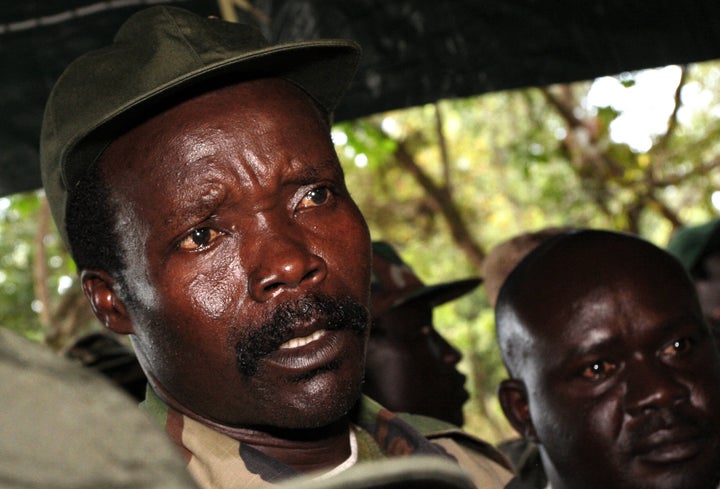
The Kony 2012 film promotes the efforts of Invisible Children Inc., a non-profit organization, to capture the Ugandan war criminal Joseph Kony by December 2012. It first began to appear in the American media through Facebook and Twitter within days of its March 5 release. Thousands of teenagers and young adults tweeted about it, shared it on Facebook and debated it on blogs. The Pew Research Center, a think-tank that follows the media, found that 40 percent of adults under the age of 30 heard about the video and 36 percent of them did so through social media.
The sudden phenomenon drew wide attention in the mainstream American media where the focus was on the rising power of new media versus traditional media. In Uganda, however, the focus was altogether different. There, accusations were raised against the accuracy of the video itself.
One inaccuracy in the video was that Kony is actually not in Uganda and has not been for the past six years. The Ugandan military drove him and the Lord's Resistance Army out of the country after a triumphant campaign and unsuccessful peace talks in 2006. The LRA is currently operating in extremely remote parts of the DRC, Sudan and the Central African Republic, although they have been reduced to numbers no more than hundred at the most. Kony is believed to be hiding in one of these three countries. Another error is how the video says the LRA currently has 30,000 child soldiers when the figure actually refers to the total number of children abducted by the LRA in over 30 years.
Initial American broadcasts on mainstream media about the video saw noteworthy journalists like Anderson Cooper and Ann Curry discuss how their respective networks, CNN and NBC, had worked and covered the conflict for years. But, they never received a response from the public anywhere along the scale of the Kony 2012 video.
"It has traditionally been the case that unless there is a gigantic international story, many Americans do not follow international news to the same degree they follow national and local news," says Lee Rainie, Director of the Pew Research Center's Internet and American Life Project. "A big part of the large response to the Kony 2012 video was that it was so prominent in social media."
However, the spread of information on social media can be a double-edged sword. The video also reached Uganda quickly. There, prominent Ugandan journalists and activists were vehemently critical of the video's factual flaws and oversimplification. Rosebell Kagumire, a well-known Ugandan journalist who had covered issues relating to Kony, released her own video addressing the shortcomings of Kony 2012. It too went viral around the world because of its perspective coming from a Ugandan itself.
Javie Ssozie, a prominent blogger and trainer of citizen journalists in Uganda, was inspired to start an online social media project called Uganda 2012 along with some of his friends as a reply to the Kony 2012 video. This project aims to tell stories about Kony and Northern Uganda from the perspectives of Ugandans. "I don't know any Ugandan journalist or media organization that has voiced support for the [Kony video] campaign except for one of the opposition leaders -- Norbert Mao, who seems to support and criticize the campaign at the same time, which is kind of weird," he said.
"Every media house has made its own analysis of the campaign differently, but of course most of the media houses have criticized the campaign based on people's reviews. This is because many of the media houses are not online so they don't take much time to analyze online content. However, NTV Uganda took more time to analyze the campaign and followed the criticism," adds Ssovie.
Still, the mainstream Ugandan media has not covered much on the video. In Northern Uganda, the epicenter of Kony's atrocities, most do not even have access to TV or newspapers, so awareness of the video there is especially low. One exception was in the Northern Ugandan city of Lira where the African Youth Initiative Network screened the film. Thousands flocked to watch it, and the evening ended with the crowd turning rowdy and throwing stones. "They didn't identify with this campaign and video," says Ssovie.
Back in the U.S., most criticisms of the video emerged on social media a few days after its release. "The criticisms came from pretty prominent foreign policy experts and got widespread attention," said Rainie. As a classic follow up to the story, the mainstream media began to take a closer look at Invisible Children too. Helping to draw attention was Jason Russell, the director and producer of the film, who had a mental breakdown in public a few weeks after the film's release.
And what reaction did part two of the film receive when it was released on April 5?
"There is ongoing coverage, though not the massive kind that greeted the first video," said Rainie. "And there are several narratives: One centers on interest in the 'hows' of viral videos. Another is ongoing coverage of the situation in Uganda and nearby countries."
